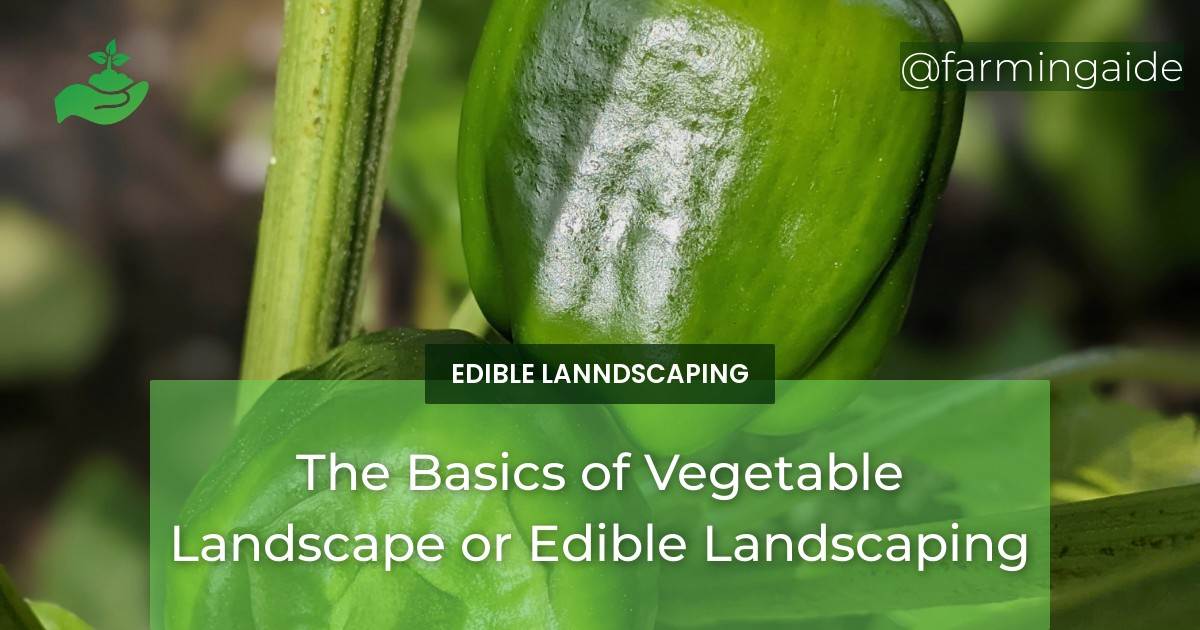Welcome to the world of vegetable landscape or edible landscaping! This unique approach to gardening combines the beauty of traditional landscaping with the practicality of growing your own food. Not only does it provide a visually appealing outdoor space, but it also allows you to have fresh, organic produce right at your fingertips. In this comprehensive article, we will delve into the basics of vegetable landscape or edible landscaping, covering everything from garden design to plant selection to pest control. By the end, you will have a thorough understanding of how to create and maintain a successful vegetable landscape in your own backyard.
Vegetable Garden Design
Proper design is crucial for a successful vegetable garden. It not only affects the aesthetic appeal of your landscape, but it also plays a significant role in the health and productivity of your plants. When designing your vegetable garden, there are several factors to consider:
Location: Choose a spot that receives at least 6-8 hours of sunlight per day and has good drainage.
Size: Consider the amount of space you have available and the types of plants you want to grow.
Layout: Plan for easy access to your plants and leave enough space between rows for maintenance and harvesting.
Additionally, a well-designed vegetable garden should include essential elements such as raised beds, trellises, and pathways for efficient use of space and organization.
Companion Planting
Companion planting is the practice of growing different plants together for mutual benefit. In vegetable gardens, this can help with pest control, pollination, and nutrient uptake. Some examples of compatible plant combinations include:
- Tomatoes, basil, and marigolds
- Corn, beans, and squash
- Carrots, onions, and lettuce
By incorporating companion planting into your vegetable landscape, you can create a more diverse and resilient ecosystem.
Seasonal Planning
Seasonal planning is essential for a successful vegetable garden. It involves creating a planting schedule based on the specific needs and growing conditions of different plants. Some factors to consider when planning for different seasons include:
Climate: Choose plants that are suitable for your region and the current season.
Soil temperature: Some plants require warmer soil to germinate, while others prefer cooler temperatures.
Harvest time: Plan for a continuous harvest by staggering planting times for different crops.
By carefully planning your planting schedule, you can maximize the productivity of your vegetable garden throughout the year.
Crop Rotation
Crop rotation is the practice of growing different crops in the same area in a specific sequence. This helps to prevent the buildup of pests and diseases, maintain soil fertility, and reduce the need for fertilizers and pesticides. To implement crop rotation in your vegetable garden, follow these steps:
Divide your garden into different sections or beds.
Rotate crops based on their plant family and nutrient needs.
Include cover crops in your rotation to improve soil health.
Plant Selection
Careful plant selection is crucial for a successful vegetable landscape. When choosing plants for your garden, consider the following factors:
Climate: Choose plants that are suitable for your region and the current season.
Soil type: Some plants prefer acidic soil, while others thrive in alkaline soil.
Space: Make sure to choose plants that will fit comfortably in your garden and have enough room to grow.
Some recommended plants for different growing conditions include:
| Climate | Recommended Plants |
| Warm and humid | Tomatoes, peppers, eggplants, okra |
| Hot and dry | Cucumbers, melons, squash, beans |
| Cool and moist | Broccoli, cauliflower, kale, lettuce |
Soil Management and Composting
Healthy soil is the foundation of a successful vegetable garden. To improve and maintain soil health, consider the following practices:
- Test your soil to determine its pH and nutrient levels.
- Add organic matter such as compost, manure, or mulch to improve soil structure and fertility.
- Practice no-till gardening to avoid disturbing the soil and its beneficial microorganisms.
Composting is also an essential aspect of soil management in vegetable gardens. It not only helps to reduce waste but also provides a nutrient-rich amendment for your soil.
How Can I Incorporate Edible Landscaping in my Zone 6 Garden?
When incorporating edible landscaping Zone 6, consider planting fruit trees, berry bushes, and vegetable gardens alongside ornamental plants. Choose cold-hardy varieties to withstand the climate. Explore companion planting to maximize space and deter pests. Incorporating edible landscaping Zone 6 adds beauty and functionality to your garden.Pest and Disease Control
Common pests and diseases can wreak havoc on a vegetable garden if left unchecked. However, there are organic methods for controlling them, such as:
Handpicking: Remove pests by hand and dispose of them.
Companion planting: As mentioned earlier, certain plants can repel pests or attract beneficial insects.
Organic sprays: Use natural sprays made from ingredients like neem oil or garlic to deter pests.
To prevent and manage pests and diseases in your garden, make sure to practice good sanitation, rotate crops, and monitor your plants regularly.
Conclusion
In conclusion, vegetable landscape or edible landscaping is a fantastic way to combine beauty and functionality in your outdoor space. By following the tips and techniques outlined in this article, you can create a thriving vegetable garden that will provide you with fresh, organic produce all year round. Remember to carefully plan your garden design, incorporate companion planting and crop rotation, choose the right plants for your climate and soil, and maintain healthy soil through composting and pest control. Happy gardening!
RELATED ARTICLES:


